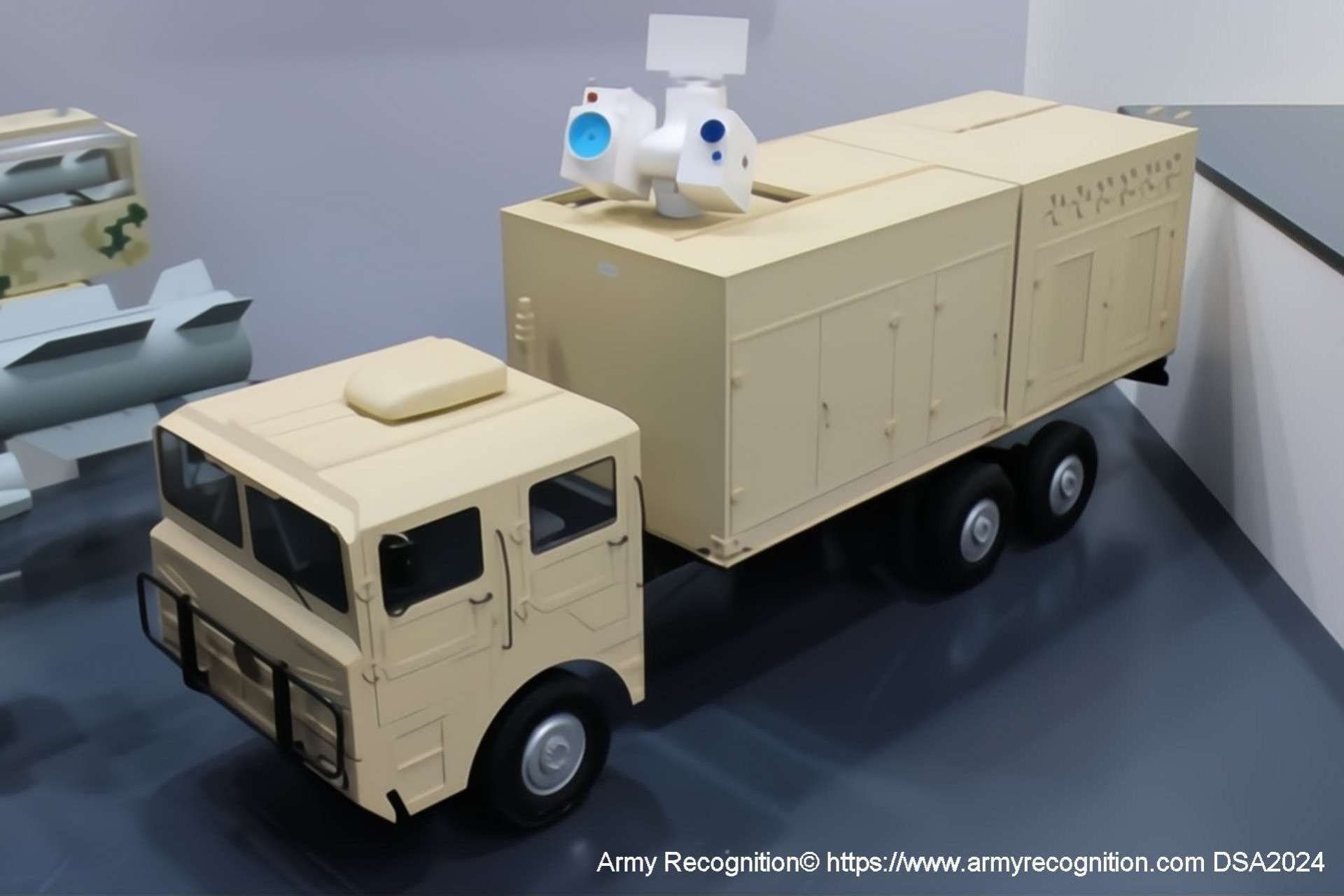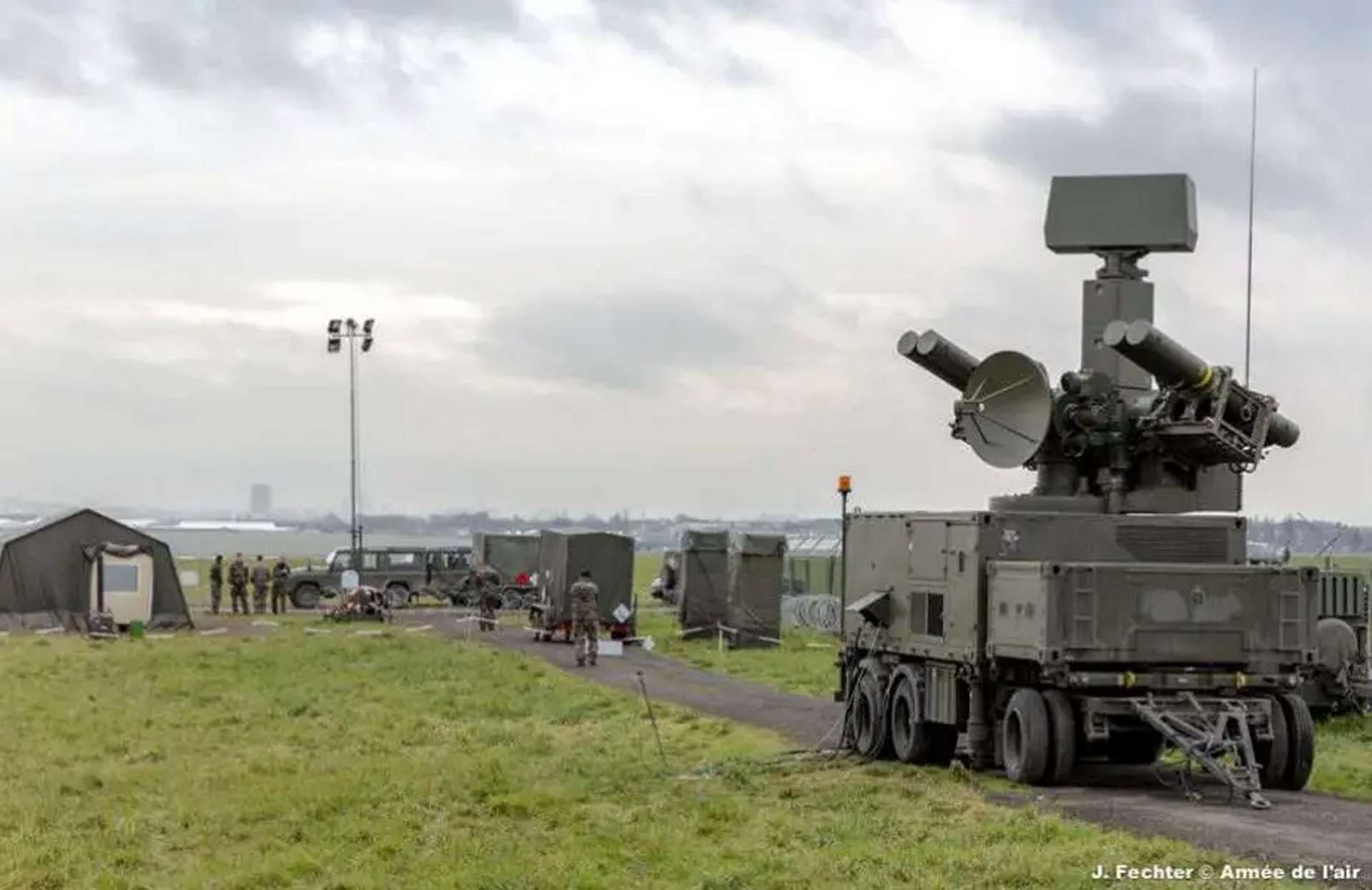Breaking News
Saudi Arabia Reveals Integration of Six Advanced Air Defense Systems to Counter Modern Threats.
On October 22, 2024, the Saudi Ministry of Defense, through an official publication, officially revealed the introduction of six advanced air defense systems into the Saudi Armed Forces. This significant development reflects the country's efforts to strengthen its air defense capabilities by incorporating a variety of systems from different nations, each tailored to counter specific modern threats, including ballistic missiles, drones, and precision-guided weapons.
Follow Army Recognition on Google News at this link

The Terminal High Altitude Area Defense (THAAD) system was developed by Lockheed Martin for the U.S. Army to intercept and destroy short-, medium-, and intermediate-range ballistic missiles during their terminal phase of flight. (Picture source: US DoD)
The newly acquired systems include the American THAAD, which is designed to intercept and neutralize ballistic missiles at high altitudes during their terminal phase. THAAD’s precision tracking and advanced missile interception make it a critical part of Saudi Arabia’s missile defense architecture. From Russia, Saudi Arabia has added the Pantsir-S1M, a versatile platform that combines surface-to-air missiles and anti-aircraft artillery to counter drones, cruise missiles, and other aerial threats over short to medium ranges.
In addition to these, the Chinese Silent Hunter has been integrated into the defense network. This system uses laser technology to neutralize small, low-flying targets such as drones, offering a novel, ammunition-free solution to deal with the growing drone threat. The Saudi Armed Forces will also benefit from the Singaporean Orion-H9, an advanced radar system capable of detecting and tracking multiple targets over long distances, providing crucial surveillance and early warning capabilities.
Rounding out the list of newly acquired systems are the Italian ADRIAN (Anti-Drone Interception Acquisition Neutralisation) and the French Crotale NG. ADRIAN is specifically designed to detect, intercept, and neutralize drones, adding to Saudi Arabia’s counter-drone efforts, while the Crotale NG offers medium-range air defense capabilities against aircraft, helicopters, and missiles.

The Pantsir system, developed by KBP Instrument Design Bureau in the 1990s, is recognized for its dual capability, combining surface-to-air missiles and anti-aircraft guns, designed to engage multiple types of aerial threats at various ranges and altitudes. (Picture source: Army Recognition)
Developed by Lockheed Martin, the THAAD (Terminal High Altitude Area Defense) is a U.S. anti-ballistic missile system designed to intercept short-, medium-, and intermediate-range ballistic missiles during their terminal phase. It includes truck-mounted launchers, interceptor missiles, and the AN/TPY-2 radar, which can integrate with other missile defense platforms for layered defense. The system has a 200-kilometer range and intercept speeds of up to Mach 8.2. THAAD has been deployed in multiple countries, including Saudi Arabia, as part of broader missile defense measures, and saw its first combat use in 2022.
Saudi Arabia’s acquisition of the Russian Pantsir-S1 system represents a shift in its air defense strategy, moving beyond traditional suppliers. The Pantsir-S1 provides point defense using a combination of surface-to-air missiles and anti-aircraft guns to counter aerial threats. The cost per unit is approximately $15 million, and while specific quantities for Saudi Arabia are not disclosed, the system is intended to protect critical infrastructure. Several variants of the Pantsir system, including the S2, SM, and Arctic-specific SA, offer expanded operational capabilities.
Saudi Arabia procured China's Silent Hunter laser defense system to address low-flying drone threats. By February 2024, eight units were in service, including during the World Defense Show in Riyadh. The Silent Hunter uses electricity to neutralize drones at distances of up to 1,000 meters. Its operations focus on intercepting drones with low-altitude capabilities, and it has been reported to intercept 13 drones in recent operations, offering an economical alternative to traditional anti-missile systems.

The Silent Hunter has demonstrated the ability to target low-flying drones moving at speeds of less than 60 m/s. It can penetrate up to five 2-millimeter steel plates at a range of 800 meters or a single 5-millimeter plate at 1,000 meters. (Picture source: Army Recognition)
Saudi Arabia partnered with Singapore’s TRD Systems to launch a joint venture, "TRD Middle East Industry Co.," for localized production of anti-drone technology. The Lightning Shield System, introduced in early 2024, is a man-portable anti-drone system capable of operating across multiple RF bands and GNSS systems. Based on the Orion-H9, it offers a range of 1-2 kilometers and is tailored for use in regional environmental conditions. The system includes a range of operational features, such as an OLED display and digital compass, with integration options for larger security systems.
Developed by Elettronica Group, the Italian ADRIAN (Anti-Drone Interception Acquisition Neutralisation) is a counter-drone system focused on detecting and neutralizing mini and micro UAVs in complex environments. The system integrates radar, electro-optical/infrared (EO/IR) sensors, and radio link interceptors, utilizing AI for detection and identification of drones. ADRIAN employs electronic countermeasures, such as jamming and GNSS spoofing, to neutralize drones without causing physical damage. It can be deployed in fixed or mobile configurations, supporting Saudi Arabia's defense needs in protecting key infrastructure.
The French Crotale NG, developed by Thales Group, is a short-range air defense system used to protect critical installations from a range of aerial threats. Equipped with VT-1 missiles that travel at speeds of Mach 3.5 with a range of over 11 kilometers, the system uses radar and electro-optical sensors for target detection and engagement. It has been adapted for land and naval use in several countries, including South Korea and France, with Saudi Arabia operating the system as part of its air defense infrastructure.

The Crotale NG (Next Generation) is an upgraded short-range air defense missile system developed by Thales Group, a French defense company, as a successor to the original Crotale system introduced in the 1960s. (Picture source: French Army)
Saudi Arabia’s acquisition of new air defense systems is driven by lessons learned from the Ukraine war and the conflict in Gaza, both of which highlight the growing use of missiles, drones, and asymmetric tactics. The Ukraine war has demonstrated the importance of multi-layered missile defense systems, as Russia’s missile strikes and the use of drones have overwhelmed traditional air defenses. Similarly, in Gaza, the use of low-cost drones and rockets by militant groups has shown the effectiveness of swarm tactics against sophisticated military forces. Saudi Arabia faces similar threats from regional actors, making the need for modern air defenses critical.
In response, Saudi Arabia has integrated advanced systems such as the U.S.-made THAAD for ballistic missile defense and the Russian Pantsir-S1M and Chinese Silent Hunter to counter drones and low-altitude threats. These additions reflect Saudi Arabia’s recognition of the evolving nature of air warfare, where threats come from multiple vectors, including drones, missiles, and precision-guided munitions. By enhancing its air defense capabilities, the kingdom aims to protect critical infrastructure and respond to the growing complexity of modern conflicts.


























